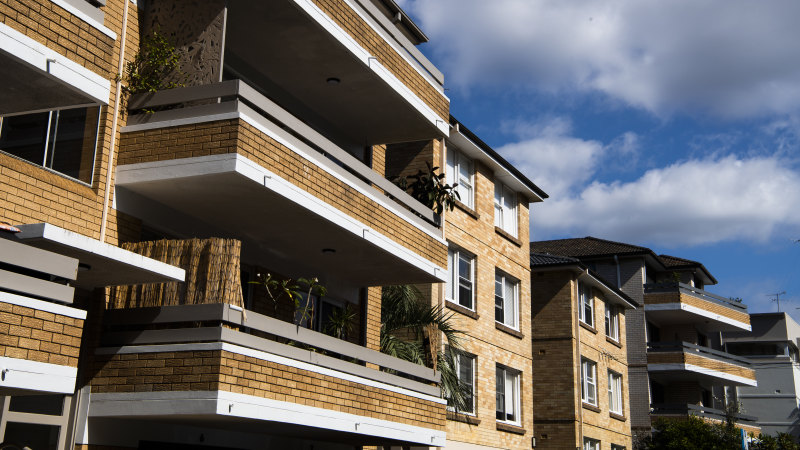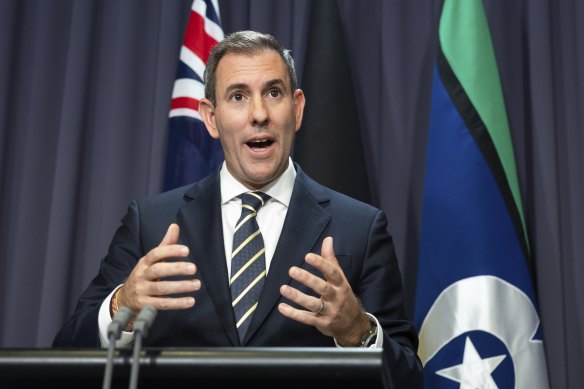Save articles for later
Add articles to your saved list and come back to them any time.
The economic impact of the so-called mortgage cliff may have already passed its peak, with RBA data revealing the majority of Australians have already moved from cheaper fixed-rate home loans to more expensive variable rates.
About one million Australians are paying a more expensive variable interest rate on their mortgages, according to Reserve Bank of Australia data. This compares with 520,000 loans expected to roll onto higher interest rates in the second half of this year, followed by a further 450,000 loans next year.
Treasurer Jim Chalmers said it was “welcome news” that more people had transitioned off fixed rates in the last year than will in the year ahead.Credit: Alex Ellinghausen
The Reserve Bank’s aggressive raising of interest rates from a record low 0.1 per cent to 4.1 per cent by June had raised fears of sharp increases in mortgage defaults. But banks, economists and analysts are optimistic that mortgage holders have proved more financially resilient than expected, with no sharp increase in defaults.
Treasurer Jim Chalmers said the passing of the midway mark of the transition, underway since last year, was welcome news, but acknowledged that families still faced cost of living strain as inflation was moderating but still remained “higher than we’d like for longer than we’d like”.
“We know that higher interest rates are putting pressure on family budgets, but this data shows that more people have transitioned off fixed rates in the last year than will in the year ahead and that’s welcome news,” Chalmers said.
“We monitor these pressures closely and we know people are under the pump which is why our primary focus as a government is delivering billions of dollars of cost of living relief without adding to inflation.”
In his last public comments last month before retiring as Reserve Bank governor, Phil Lowe said households were coping with the transition to higher variable rates because they were “squirrelling away” savings in preparation, but warned “that doesn’t mean there won’t be problems down the track”.
“What we know from the banks about the million that have transitioned is that when they transition, they haven’t fallen behind on their housing loans at any greater rate than those on variable-rate loans,” Lowe said last month.
EY chief economist Cherelle Murphy said that while many people were facing mortgage stress, some intensely so, households had also stockpiled record amounts in savings and offset accounts and redraw facilities during the pandemic era, which served as a buffer against the hiking cycle.
“They’ve been planning for it and they have been saving a lot during the COVID years, so they are in as good a position probably as they ever could have been to cope with this sharply higher repayments all at once,” she said.
Diana Mousina, deputy chief economist at AMP, cautioned against being too optimistic about the outlook, saying “even if there’s no more rate rises, households will be continuing to pay a record share of the income on their mortgage”.
“We never thought that we would see massive force selling [of homes] or a big drop in prices or a huge collapse in the consumer because of the change to people’s repayments,” she said.
“But I still think it’s too early to say that we’ve passed it and everything’s hunky-dory and everything’s fine because as we continue for another six months there will be more households that continue to transition.”
Get the day’s breaking news, entertainment ideas and a long read to enjoy. Sign up to receive our Evening Edition newsletter.
Most Viewed in Politics
From our partners
Source: Read Full Article

